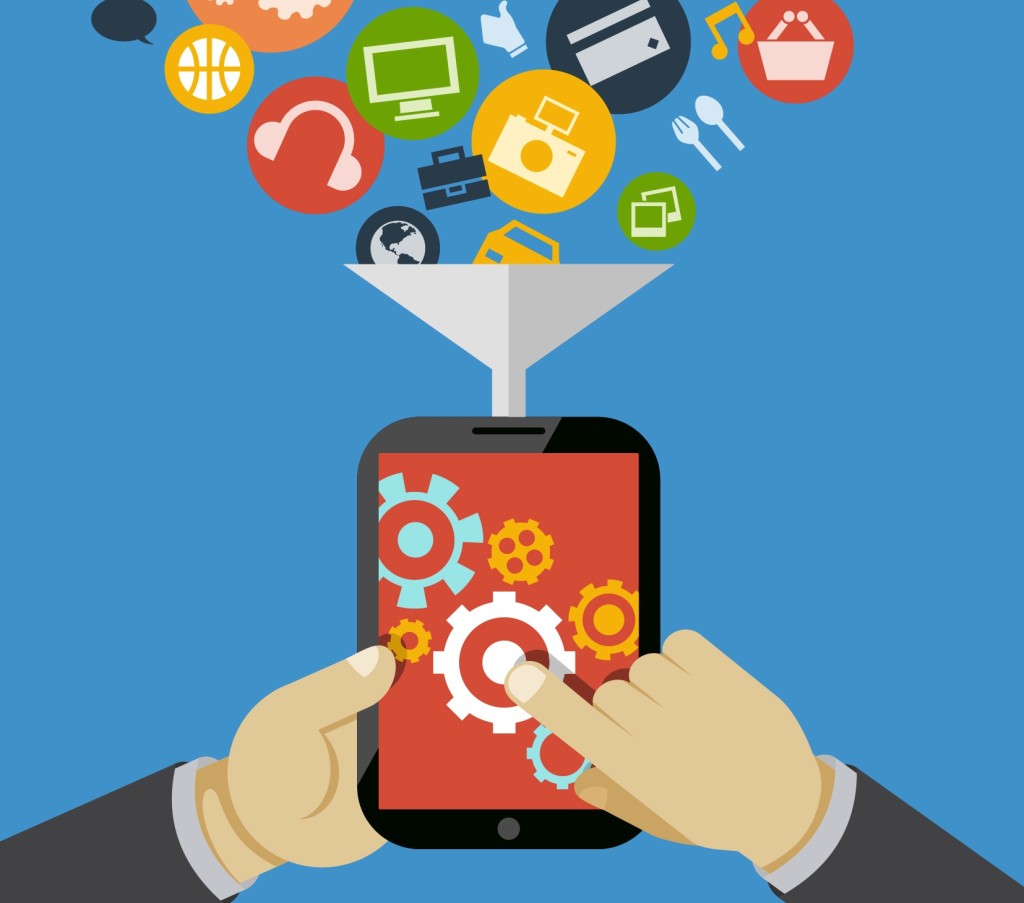 The concept of the sales funnel is Marketing 101. It’s so ingrained in how we think about the sales process that it’s hard to admit that it needs a big re-think. Yet, three key factors of the digital era – mobile, social and data – are changing how we think about the sales funnel.
The concept of the sales funnel is Marketing 101. It’s so ingrained in how we think about the sales process that it’s hard to admit that it needs a big re-think. Yet, three key factors of the digital era – mobile, social and data – are changing how we think about the sales funnel.
So let’s back up a second. The sales funnel concept basically says that you have a huge number of leads, and then through a series of different stages – usually described as AWARENESS, DISCOVERY and EVALUATION – you are eventually going to lose a huge percentage of those leads. However, you’re also going to keep a small percentage of those leads who are eventually are going to be converted into sales.
What’s wrong about this whole metaphor of the funnel is that it turns sales and marketing into purely a numbers game. It’s the law of big numbers. If you have 1,000 leads and convert 5 percent of them, then why not get 10,000 leads and still convert 5 percent of them. That’s a whole order of magnitude better. Ka-ching!
Or, better yet, why not try to widen the hole at the bottom of the funnel and convert 6 percent (or 7 percent!) of them rather than 5 percent? That sounds like a minor change, but even an incremental increase in the conversion rate means a huge boost for your sales. But even that number is way too small. You’re basically accepting a 95 percent failure rate and calling it normal. In what other field is a 95 percent failure rate acceptable?
So what’s changed?
Big data has big implications for that poor sales funnel. It means that not every lead is created equal. Think about it – in the traditional model, a lead is a lead is a lead. You really don’t have any way to differentiate between leads other than “I met this prospect at a trade show” or “this customer found me via social media.” But with big data, you can go way further than that to drill down on the unique characteristics of those leads, so you have a much better idea of which leads are “qualified” and which are not.
Social also changes the funnel because all 3 of those stages – AWARENESS, DISCOVERY and EVALUATION – are changed when you sprinkle a little social media over them. That’s because each of those processes is inherently social – people learn about your company through others, they evaluate your company based on what their peers have to say, and they talk about your company with their friends. Your company’s social strategy, then, helps to either widen or narrow the funnel. The more social you are, the wider that funnel is going to be,
And, finally, there’s mobile. You can think of mobile as collapsing the sales funnel entirely. That’s because the linear step-by-step progression required to make a sale is now all happening on a mobile device. Customers are learning about you via social, they are interacting with you via mobile, and, yes, they are pushing the final “buy” button on their mobile device.
Maybe it’s too early to be calling for the retirement of the beloved sales funnel. But let’s face it — the sales funnel is an analog world creation. We need a new metaphor for the digital world that better captures how prospects really turn into customers.
Image: Designed by Freepik
